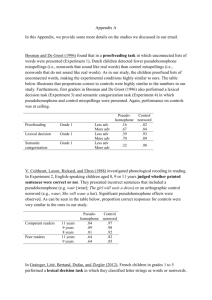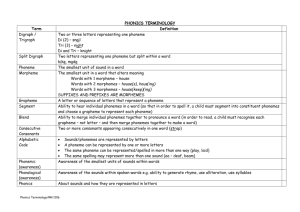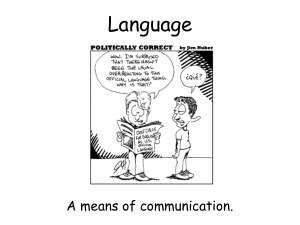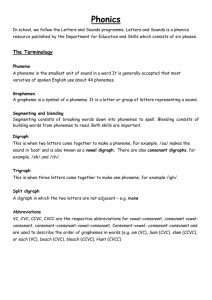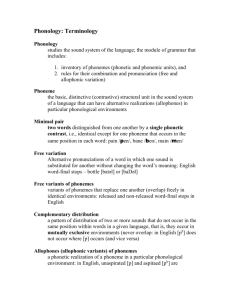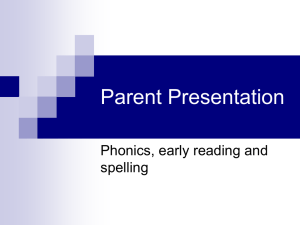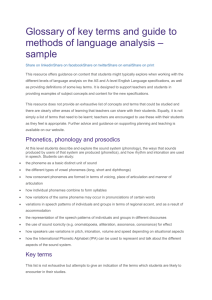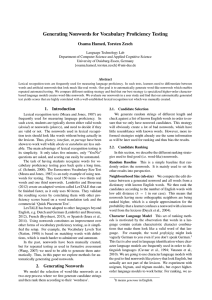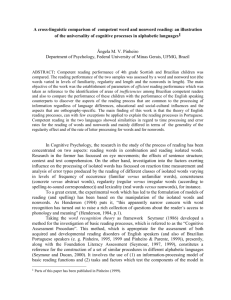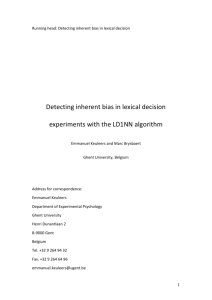Experiment 1
advertisement
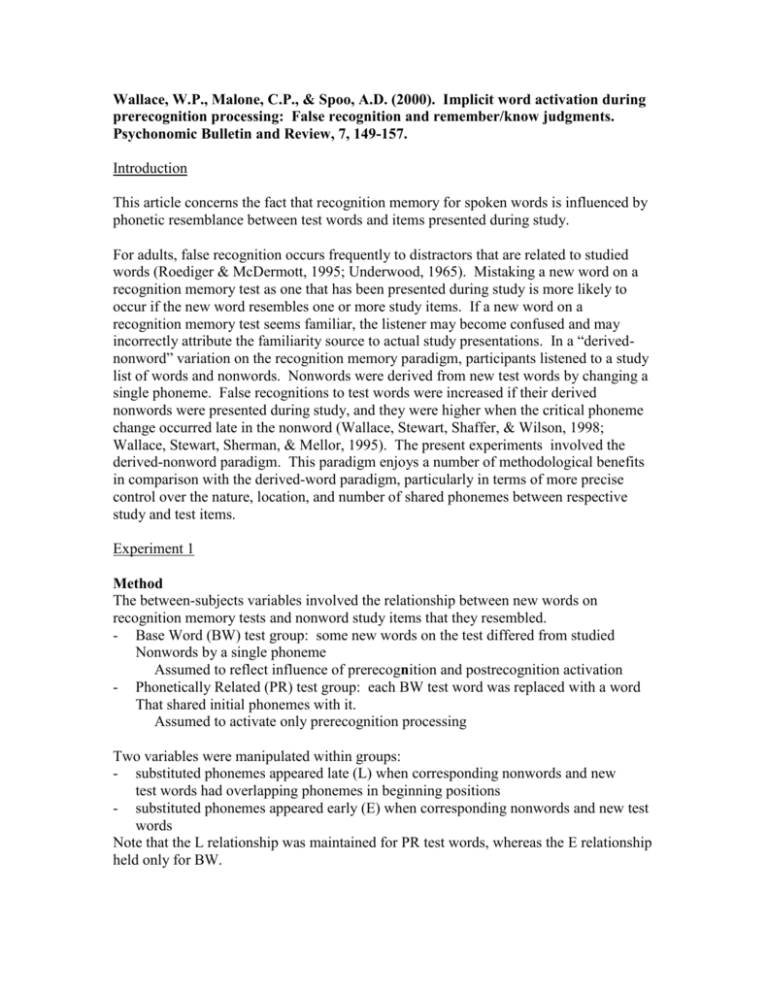
Wallace, W.P., Malone, C.P., & Spoo, A.D. (2000). Implicit word activation during prerecognition processing: False recognition and remember/know judgments. Psychonomic Bulletin and Review, 7, 149-157. Introduction This article concerns the fact that recognition memory for spoken words is influenced by phonetic resemblance between test words and items presented during study. For adults, false recognition occurs frequently to distractors that are related to studied words (Roediger & McDermott, 1995; Underwood, 1965). Mistaking a new word on a recognition memory test as one that has been presented during study is more likely to occur if the new word resembles one or more study items. If a new word on a recognition memory test seems familiar, the listener may become confused and may incorrectly attribute the familiarity source to actual study presentations. In a “derivednonword” variation on the recognition memory paradigm, participants listened to a study list of words and nonwords. Nonwords were derived from new test words by changing a single phoneme. False recognitions to test words were increased if their derived nonwords were presented during study, and they were higher when the critical phoneme change occurred late in the nonword (Wallace, Stewart, Shaffer, & Wilson, 1998; Wallace, Stewart, Sherman, & Mellor, 1995). The present experiments involved the derived-nonword paradigm. This paradigm enjoys a number of methodological benefits in comparison with the derived-word paradigm, particularly in terms of more precise control over the nature, location, and number of shared phonemes between respective study and test items. Experiment 1 Method The between-subjects variables involved the relationship between new words on recognition memory tests and nonword study items that they resembled. - Base Word (BW) test group: some new words on the test differed from studied Nonwords by a single phoneme Assumed to reflect influence of prerecognition and postrecognition activation - Phonetically Related (PR) test group: each BW test word was replaced with a word That shared initial phonemes with it. Assumed to activate only prerecognition processing Two variables were manipulated within groups: - substituted phonemes appeared late (L) when corresponding nonwords and new test words had overlapping phonemes in beginning positions - substituted phonemes appeared early (E) when corresponding nonwords and new test words Note that the L relationship was maintained for PR test words, whereas the E relationship held only for BW. Lists were constructed from 48 sets of words and nonwords. Each set consisted of a base word and three items related to it: -a PR word with common phonemes in the initial three to seven positions -an L derived nonword with a single phoneme change in a late position -an E derived nonword with a single phoneme change in an early position The study list had 12 words, 12 E nonwords, and 12 L nonwords with half presented three times. A total of 78 words and nonwords were presented during study. Twelve test words were studied words (S), and 36 test words were distractors. Sixty introductory psychology students were randomly assigned to BW and PR conditions and to one of the list conditions required for balancing materials across S, E, L, and C and the one- and three-repetition conditions. Results Group BW made more false recognitions to distractors than did group PR. False recognition varied as a function of E, L, and C conditions. According to Figure 1, there were more false recognitions following L than following E derived nonwords on the study list, with the exception of an unexpected reversal in BW with one study presentation of derived nonwords. This was consistent with previous experiments using this paradigm. Experiment 2 In this experiment, it was assumed that base words and words sharing initial phonemes with them would be more highly activated as potential solutions during prerecognition processing of L, as opposed to E, derived nonwords. The claim is that false recognitions evolve from feelings of familiarity. Remember and know judgements were also investigated indicating whether or not “old” responses were based on remembering (R ) study episodes or knowing (K) that test words were presented even though the exact episodes of presentation were not remembered. Method The principal addition was the requirement for participants to give R or K judgements for each recognized word. The recognition memory was self-paced. In all other respects, materials and procedures were similar to those of Experiment 1. Results The difference in number of correct responses between groups was significant. Statistical analyses of false recognition produced results similar to those from Experiment 1. There were more old-R responses to studied words for group BW than for PR, and they did not differ in old-K responses. For false recognition, there were more old-R responses for BW than for PR. Group BW made more K false recognitions than PR. Table 1 shows bias measure and reveals that participants set a more conservative criterion for R than for K+R judgements. Discussion Data demonstrate that more false recognitions occurred following a study of L as opposed to E derived nonwords when test words were phonetically related to the base words from which study nonwords were derived. Postrecognition processing may result in self-generated episodes of word occurrence, whereas prerecognition word activation imparts only general increments of familiarity for activated words. A new word on a recognition memory test may elicit a false recognition because it seems familiar owing to prerecognition and postrecognition activation. It should be noted that R-K data are not informative about whether R judgements are based on “recovered” experience and K judgements are restricted to general feelings of familiarity.
